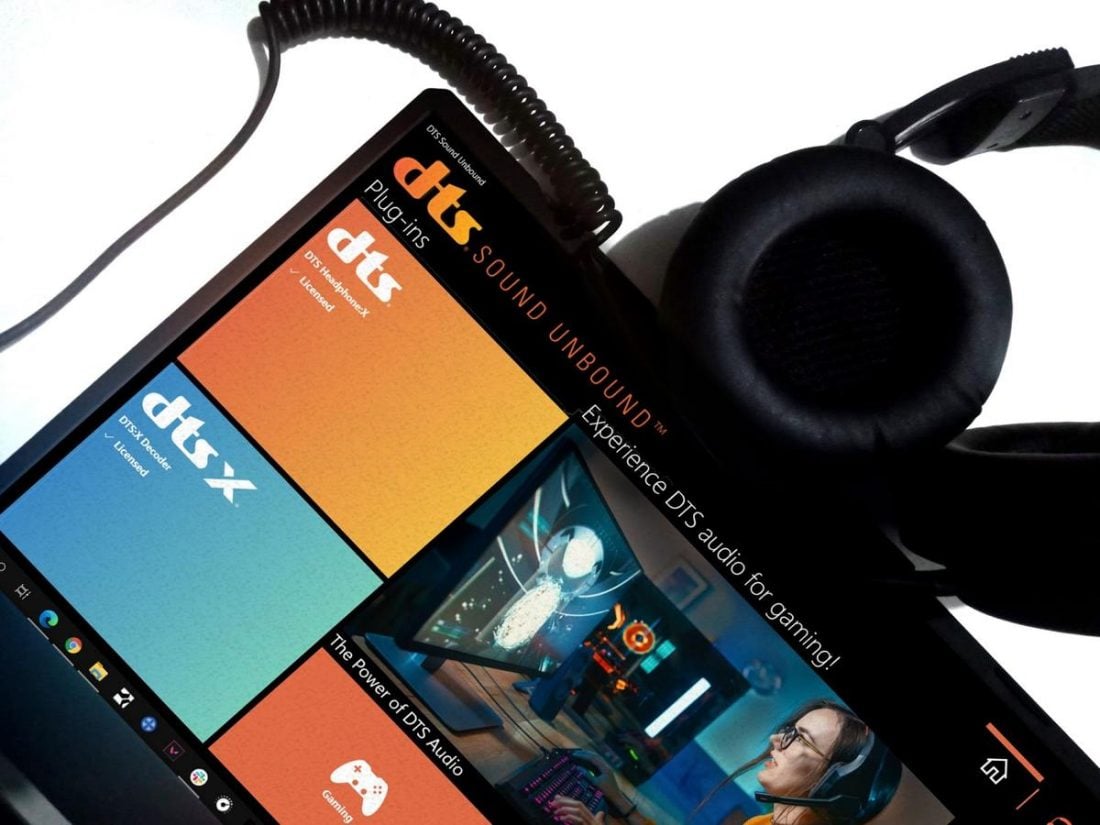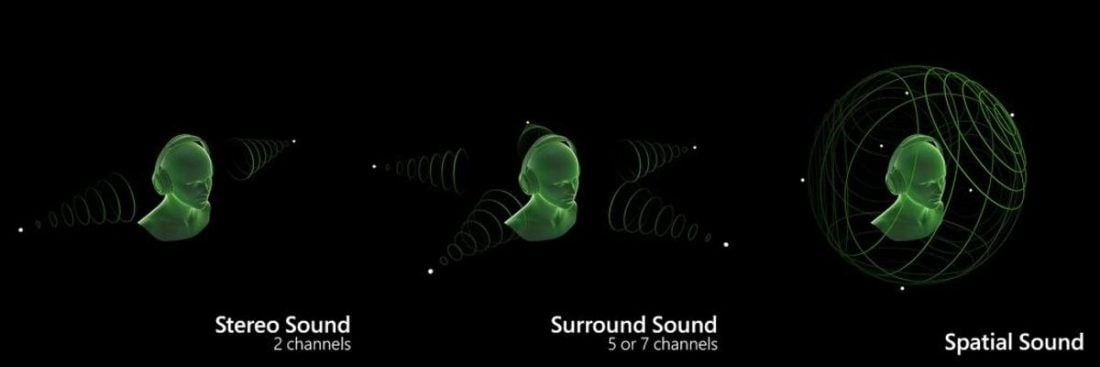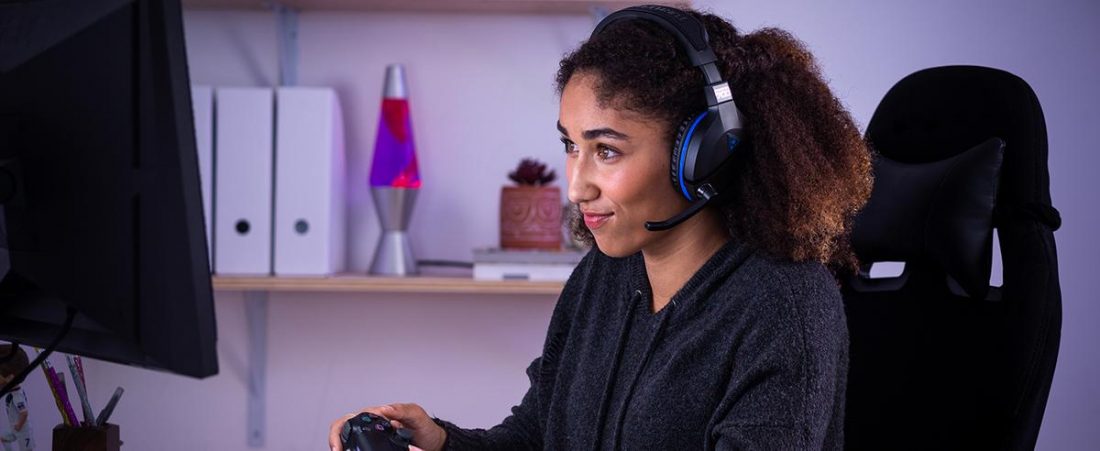Having surround sound on your headphones makes every game or movie audio more realistic. With accurate spatial sound positioning, ‘flat’ and ‘plain’ sounds can transform into something that brings your audio to life. The problem is, there are a lot of different surround sound softwares available today. And choosing one can be difficult, especially since it involves spending some hard-earned cash. So, to help you ease that a bit, we’ll be looking at one of the biggest names in spatial sound technology: DTS Headphone: X. In this article, we’ll be testing it out to see if the application’s worth your penny. Read on to find out more!
What is Spatial Sound?
Before digging in further, let’s first understand what virtual surround sound is and how it differs from spatial sound. As you may know, stereo sound refers to when the sound is simply coming from your left or right side. Virtual surround sound, on the other hand, is an audio system that creates the perception of sound coming from different directions (beside and around you). Its algorithm is designed to trick your ears into thinking that there are more speakers than there actually are. Typically, true surround sound systems produce immersive audio by using multi-channel systems. This refers to 5.1 surround sound systems (5 speakers and one subwoofer) and 7.1 surround systems (7 speakers and one subwoofer). With virtual surround sound technology, however, sounds are artificially replicated using only two speakers. Through Spatial Sound, your audio is perceived to flow in a three-dimensional virtual space. This means it projects sound to not just be beside and around you, but also above and below you.
What Is DTS Headphone: X
DTS is one of the biggest names when it comes to spatial and surround sound technology. Since 1993, it has been pioneering and developing audio solutions to up the quality and immersiveness of audio. And as part of its efforts to ‘make the world sound better’, it rolled out its DTS Headphone: X feature last 2015. DTS Headphone: X is an audio solution that replicates the spatial sound experience you get when listening to sounds produced by multi-speaker sound systems. This software leverages Microsoft Spatial sound to produce accurate sound localization. It works on any set of headphones and is able to virtually render sounds above, around, and close to the headphone user.
DTS Headphone: X 7.1 vs. DTS Headphone: X v2.0
If you’re new to DTS, you may get confused about how DTS Headphone: X 7.1 differs from DTS Headphone: X v2.0. Well, basically, the main difference between the two is that the former is hardware-based and the latter is software-based. Here’s a quick run-through of the two: DTS Headphone: X v2.0 is a spatial sound software that can work on any set of headphones. The v2.0 is the newer and more advanced version of DTS Headphone: X. It includes new features such as enhanced bass rendering and audio clarity. Plus, it improved proximity cues, and lossless Hi-Res audio support compared to the first version. The DTS Headphone: X 7.1, on the other hand, refers to the hardware that transforms stereo sounds into immersive surround sound output. It’s a hardware processor, usually in the form of a USB dongle or transmitter. 7.1 is specifically tuned for the particular set of headphones that it comes with. An example of this is the Turtle Beach Stealth 700 with DTS Headphone: X 7.1 surround sound headphones.
How Does DTS Headphone: X Work
As discussed, DTS Headphone: X uses a certain algorithm to transform stereo sound into a lifelike and realistic 3D audio output. This involves ‘backwards processing’, a process that enables your ears to perceive sound in a way that the human ear perceives them as ‘spatial’. Unlike older audio formats which are audio-based, the DTS Headphone: X standard is object-based. This means that this audio codec optimizes and adds depth to the audio by encoding audio metadata that ‘tells’ the amplifier where a specific sound is coming from. With this, the audio’s loudness is adjusted accordingly and sound reflection is taken into account. This way, DTS Headphone: X is able to mimic immersive sounds produced by multi-speaker setups.
DTS Headphone: X Features and Drawbacks
Now that we’ve discussed what DTS Headphone: X is and how it works, we can now dive deeper into its advantages and disadvantages. Below is a list of its features and drawbacks to help you decide if DTS Headphone: X is indeed worth the purchase.
Realistic sound quality
Most audiophiles would agree that DTS’ sound technology is one of the best when it comes to sound quality. To put it simply, the lower the audio compression is, the clearer and more realistic the sound is. And thanks to DTS technology’s low compression rate, it is able to produce more realistic sounds than any other spatial sound softwares out there.
Works with any pair of headphones
Another great thing about this software is that it works on all headphone models. This means that you won’t have to worry about having to buy another set of headphones to experience it. According to DTS, this technology also includes a database of more than 500 custom-tuned headphone profiles. Thanks to this, the software can consider the headphones’ specific build to achieve an optimal listening experience.
Customizable voice volume control
DTS Headphone: X lets you customize the volume range of voices in movies and games. Voice volume control is extremely useful in situations where important dialogues in movies/video game cutscenes are being overpowered by loud sound effects and/or background music.
DTS Headphone: X – The drawbacks
Paid application
Unlike other spatial sound applications such as Windows Sonic, DTS Headphone: X isn’t free. To get its license, you’ll need to purchase it from the DTS Sound Unbound store for a one-time payment of $19.99.
Limited media and platform support
Since DTS Headphone: X is a fairly new audio codec, some media and applications do not support it yet. Only a handful of mainstream video games and 4K Blue-ray movies support it as of the time of writing (April, 2021)
Slightly pricier option
Casual listeners with untrained ears usually won’t be able to tell the difference between the sound quality of DTS and its cheaper counterpart, Dolby Atmos. So if you’re a casual listener who’s on a strict budget, going for the cheaper option may be the wiser move.
DTS Headphone: X – Is It Worth It?
Considering how much it improves your listening experience, DTS Headphone: X can be an irresistible deal for anyone. Plus, when you buy DTS Headphone: X, it comes bundled with DTS:X decoder. What a steal, right? But, this still depends on how you’ll use the software. So to make this review more thorough, we weighed in the benefits of the software based on its intended uses. Here’s how DTS Headphone: X measured up:
For movies
Worth it? It depends. DTS Headphone: X provides an immersive audio experience that makes you feel as if you’re inside the movie. With its advanced spatial surround sound technology, your headphones are able to deliver sounds to make you feel like you’re actually in the scenes. So if you’re a movie fanatic, this software is definitely worth it. If you play movies using DTS Headphone: X on these movie streaming platforms, the app will only be able to produce the traditional 5.1/7.1 surround sound output, instead of the more renown spatial sound.
For gaming
Worth it? Yes! DTS Headphone: X can offer the best sound technology for gaming compared to their competitors. This application offers excellent immersive sound positioning while keeping sound distortion to a minimum. However, its effect can only be fully enjoyed when used with DTS: X-supported games. But even if you play games that aren’t naturally DTS: X-supported, you can still notice an improvement in sound quality. In this case, DTS can still create a virtual sound field although the audio may not sound as good. For your reference, here’s a list of DTS Headphone: X-supported games as of the time of writing (April 2021):
Gears 5 Borderlands 3 Call of Duty Modern Warfare Forza Horizon 4 Shadow of the Tomb Raider Assassin’s Creed Origins For Honor Final Fantasy XV Resident Evil 2 Metro Exodus The Division 2
For casual music listening
Worth it? It depends. If you’re a hardcore audiophile, you’ll definitely appreciate the increase in sound quality that DTS Headphone: X can provide. It has customizable equalizer settings that you can adjust to suit your preference. Through this app, you can also hear an increase in space, clarity, and depth in your music. But while it inarguably improves your music listening experience, the very limited array of DTS Headphone: X-supported music content is one of the factors that you should consider if you’re planning to use this for casual music listening. Compared to audios specifically mixed for DTS, regular audio tracks won’t have the same wide soundstage and accurate instrument panning/positioning. Listening to regular audio tracks with DTS Headphone: X will only amplify some frequencies, and not really accurately pinpoint each instrument and vocal track for a 3D audio experience. So unless you’re a hardcore audiophile who’s willing to invest in this specific audio format, buying DTS Headphone: X for casual music listening may not be the best option.
Conclusion
Overall, DTS Headphone: X is a great application. It’s an audio solution made to achieve that immersive and lifelike listening experience that we all love. It may take some time for DTS Headphone: X to mature as a format and offer a wider array of content supported by it, though. Yet, investing in this application for the long run is a great move especially for those who truly appreciate the beauty of spatial sound. So, have you decided yet? How did you find DTS Headphone: X? Let us know in the comments section below. We’d love to know your thoughts!





